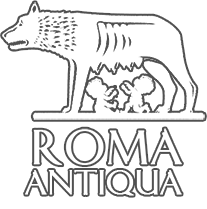Roma antica foro romano colosseo altare della patria circo massimo roma virtuale 3d lazio
percorsi4-eng
inglese



Tour 4
-from Piazza Venezia to Largo Argentina-
View Larger Map
or Print it
(the map is a guide, follow the instructions below)
-
in Piazza Venezia if you look slightly to the left, having the Victorian behind you, you can see Palazzo Venezia. In 1470 it was the residence of Cardinal Barbo, when he was elected pope with the name Paul II he moved to the Vatican and left the palace to Venetian Republic. In the modern era Palazzo Venezia was the seat of the Fascist Party during the Second World War. Here there was also the office of dictator Benito Mussolini and he proclaimed from the balcony of the palace his speeches to the people. To the right of the palace there is the Basilica of San Marco, the patron saint of Venice. To the left of the church there is a large bust of a woman called Madama Lucrezia, one of six talking statues of Rome, in reality it is the Egyptian Goddess Isis.
-
through the garden to the left and then the Fontana del Mercatello revenue in Via Margana, leading to the Piazza Margana, from the charming medieval appearance. Here the powerful family of Margana lived since 1300, and the appearance of the surrounding buildings remained intact in their original appearance.
-
from here a few meters on the left, you are in Piazza Campitelli with beautiful fountain in the center on which are depicted the coats of arms of noble families who lived nearby. If you walk along Via Montanara, you will find yourself in front of the magnificent Teatro di Marcello. The theater was dedicated in 13 BC in Marcellus, nephew of the Emperor Augustus.
-
among the ruins of the theater in a few seconds you will arrive in the heart of the Ghetto of Rome, also known as the Portico d'Ottavia clearly visible from the remains of the structure dedicated to Octavia, the sister of Emperor Augustus. During the Middle Ages there was held here the fish market, so the next church is dedicated to St. Angel in fish. Note aloft a large marble slab where it is indicated the size of a fish, when fish exceeded that measure it must be donated to the noble city politicians.
-
the Ghetto of Rome is one of the oldest in the world, it was created in 1555.
-
In October 16, 1943, in the small square in front of the Portico d'Ottavia were conducted1022 Jews who were deported from there to the Nazi death camp of Auschwitz, only a few of them come back.
-
In the ghetto all the buildings date back to 1300, 1400 to 1500. The current urban planning and the elevation of the embankments of the river Tiber has heavily modified the original structure of the ghetto, but it remains intact in some corners of the beauty and flavors.
-
if you turn right into Via princess in a few seconds you will be in Piazza Mattei, famous for its beautiful Fountain of the Turtles of the end of 1500, which, with its polychrome marble, with 4 male figures that help 4 turtles to drink in water, make this one of the most beautiful fountains in Rome.
Curiosity: a copy of the fountain is located in Huntington Park, in San Francisco, USA.
-
continuing along Piazza Paganica you get to Largo Argentina, where, thanks to the archaeological excavations of early 1900's, were found the remains of four temples of the Republican era, dated between 400 and 200 BC. Not knowing the name of the deity to whom the temples were dedicated, they are recognized with the first few letters of the alphabet: A, B, C and D.
The name given to the Piazza is curious. In fact there was the medieval tower where lived the Bishop Burkard, of Strasbourg, this town was known by the Latin name of "Argentoratum", so the people of Rome called this space " there where that one of Argentoratum lived", which was easily trasformed in: Argentina.
- if you are not too tired, you can reach Via del Monte della Farina, where at street number 30, in the courtyard of a building there is a statue of Julius Caesar. This is the place where Julius Caesar was stabbed and killed on March 15, 44 BC.
